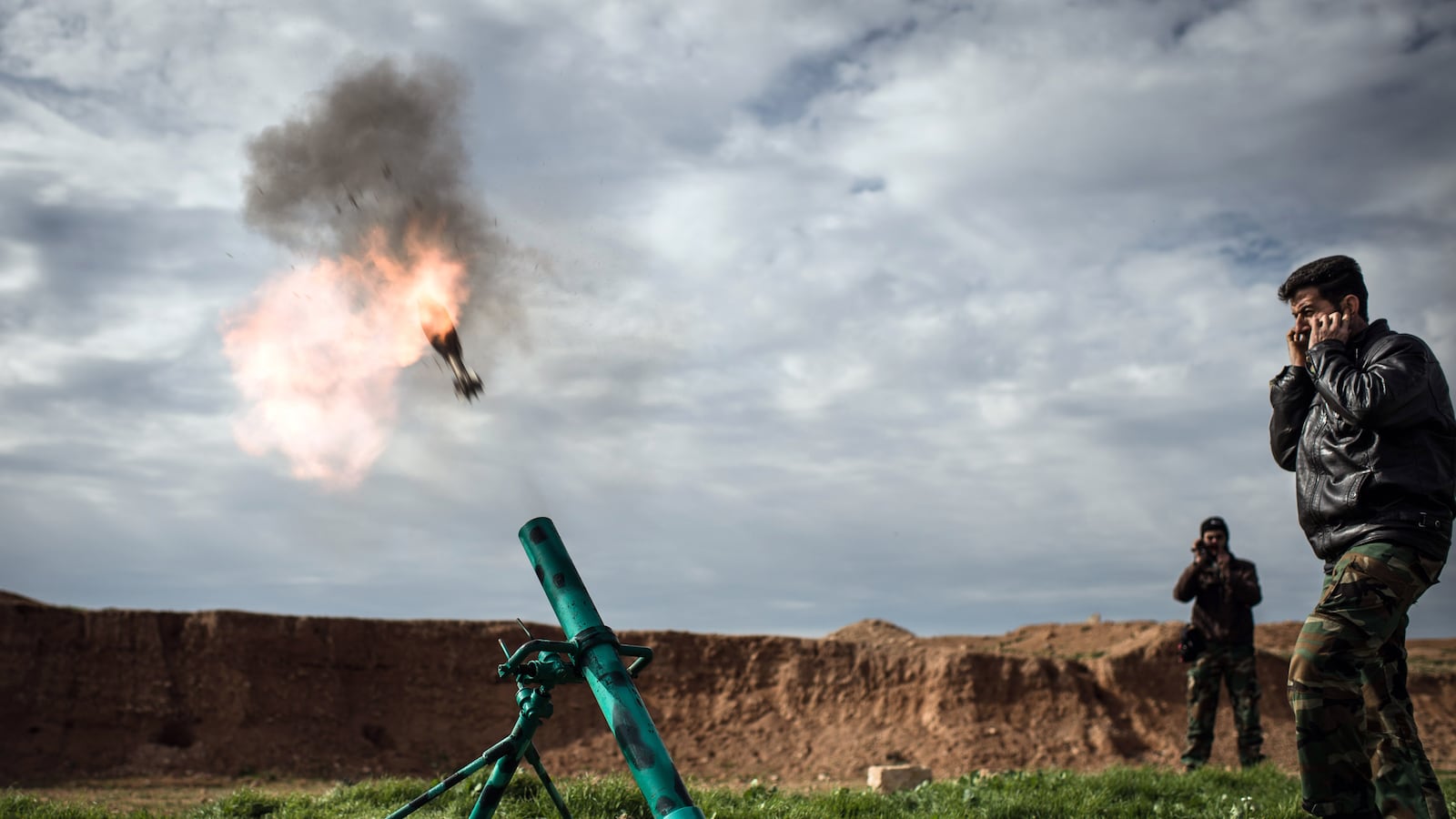Syria is in an escalating stalemate, with little prospect of victory for either side and steadily increasing violence. And few have experienced the peril of this punishing violence like the residents of Aleppo.
In the past month, regime helicopters dropped barrel bombs on their own citizens, while talks in Geneva served only to show how intractable are the two sides’ negotiating positions. And in a series of local surveys we conducted across Aleppo, a growing number of civilians in Syria’s largest city believed “no one” was their most legitimate representative. Those surveys, conducted across areas in both regime- and opposition-held neighborhoods, were part of a study sponsored by the American Security Project and released last week. We believe this research provides one of the clearest pictures to date of conditions on the ground in Syria.
We chose Aleppo for this study because it is a city whose fate may resemble Iraq’s Mosul or Libya’s Benghazi: an ungoverned second city that is ripe for terrorist sanctuaries or as a hub for illicit networks. The city is Syria’s largest, most industrial, and one of its most diverse: before 2011, Aleppo had the largest Christian population of any city in the Middle East save Beirut. Aleppo is nearly 7,000 years old, but may never have experienced so devastating a conflict as today: much of the world-heritage listed old town has been destroyed or severely damaged.
Aleppo is also a microcosm of Syria’s civil war. Its complex patterns of opposition violence and contested governance mirror the fractured picture of Syria writ large. And while the picture is overwhelmingly negative—no side wants a ceasefire, none can defeat the other, and neither could enforce a peace settlement even if one had been reached in Geneva—there are still local glimmers of hope.

Within Aleppo, the Assad regime controls the balance of power, but its public support is flagging. It remains well-entrenched: though the regime occupies only one third of Aleppo’s neighborhoods it controls 70 percent of the nearly 200 checkpoints deployed across the city. Yet although Assad’s military has the upper hand for the moment, anti-regime sentiment is growing in the heart of its territory. Many residents in regime-controlled areas receive neither salaries nor humanitarian assistance, and believe “no one” can resolve local disputes or crimes—suggesting little trust in the government. The regime is likely aware of this declining public support: these are the same areas where Air Force Intelligence, the most feared state security institutionin Syria due to its expertise at crushing dissent, is strongest.
In opposition-held eastern Aleppo, armed groups are beating back the Islamic State of Iraq and Syria (ISIS), a salafi-jihadist group so extreme that Al-Qaeda recently disowned it. From September to December, ISIS aggressively seized neighborhoods in eastern Aleppo from Free Syrian Army-affiliated battalions. The group focused on districts far from the front lines, attacking soft targets where few opposition fighters were on hand to oppose them. ISIS grew from a marginal player controlling only one out of 56 neighborhoods in September 2013, to dominate 12 by December.
But in late December, an alliance of local opposition groups began fighting back, seizing ISIS headquarters (formerly Aleppo’s National Hospital) and kicking the group out of two neighborhoods. By the end of the study, ISIS still controlled more neighborhoods (10) than any other opposition group. It likely has lost many of those neighborhoods today. Its fate may have been foretold by its relations with the community: its checkpoints were the most restrictive and widely avoided in Aleppo—suggesting a strained relationship with local civilians. ISIS is closely connected with Al-Qaeda in Iraq and appears to be making the same mistakes as the group that Sunnis rejected in Iraq’s Anbar province.

Despite these positive micro-trends, the big picture remains deeply troubling. There’s widespread disillusionment with political institutions in Aleppo: less than two percent of Aleppo residents believe the Etilaf (the representatives of the Syrian opposition at Geneva) were legitimate representative of the Syrian people. The regime was hardly popular either: only 12.1 percent of respondents saw the Assad government as legitimate.
The repeated failure of each side to gain complete control of the city, along with the deep suspicion of national institutions at the hyper-local level, suggests that while neither side can militarily defeat the other, a ceasefire and a transitional government remain far off.
But above all, we believe this report highlights the necessity of improving the ability to collect local, objective data in conflict-affected environments and humanitarian disasters. For this effort we trained local researchers to use First Mile Geo, a cloud-based mapping technology, to gather data about the conflict in their own neighborhoods. We then verified their local observations against wide-area survey results and against what we could see in social and online media.
The study is drawn entirely from open-source information, but often involving research in relatively denied areas. It combines a geo-located, monthly, citywide survey of residents, with participant observations of conflict across the city pinpointing the locations of military checkpoints. It identifies neighborhoods where armed groups, civil society organizations and aid agencies are working; and maps good proxy indicators for civilian freedom of movement and food security to help understand the humanitarian crisis.
We believe this approach is an important first step in improving our understanding of complex conflicts. We strongly encourage you to read the report and interact with it on the website.






